Welcome to New Player’s Guide, the first stop on your journey to playing D&D. This series has advice for players who’ve just joined their first D&D campaign, as well as Dungeon Masters who want help taking their new campaign to the next level. To see the other articles in this series, check out the New Player’s Guide tag—and for the brass-tacks information on how to start playing D&D, click on the New Player Guide link at the top of this page!
In this installment of the New Player's Guide, we talk about tactical combat for both players and Dungeon Masters. Why would you want to play D&D tactically, rather than abstractly? What benefits are there to playing with maps and minis over just using your mind's eye? And can you really have a game that balances tactical combat with fun roleplaying, or is it impossible to do both?

Two Ways to Play
There are two main ways of battling monsters in D&D. One is called Theater of the Mind, and it involves the DM describing each situation that the characters are in, sometimes using simple visual aids to clarify complicated situations. Many people love this style of play, and unlike games that necessitate a more tactical ruleset, this method works perfectly well for most D&D players. You can read more about how to play in the Theater of the Mind like a master in this series by Mike “SlyFlourish” Shea.
The other method is called tactical play, and it involves using maps and miniatures to represent the approximate position of all characters in a scene in relation to their environment and one another. It can also be called gridded play, because these maps are divided into a grid of 1-inch-wide squares, each of which represents a 5-foot-wide area in the world of the game. The biggest advantage of playing with maps and minis is that there's no guesswork as to where each character is. Everyone at the table has a clear indication of where all the characters, monsters, and terrain elements are in the encounter.
A lot of people play D&D this way. The cast of Critical Role play the game this way, as do a lot of people who played a lot of third or fourth edition D&D, because those games’ rules put a lot of emphasis on tactics and positioning. Playing in this way can make your D&D session feel more like a game, rather than a free-flowing story, but that’s not necessarily a bad thing. Fifth edition D&D excels at providing an experience that sits roughly in the middle of hardcore tactical wargaming and totally free-form storytelling.
This is a guide for new players and DMs to get the most out of tactical combat. At its best, a tactical battle can be tense, exhilarating, and as much a puzzle as it is a battle. Using a map and miniatures can help you and your friends visualize the scene better, whether you’re playing in person with physical terrain and figures or online with digital tools. A bad tactical encounter can be a boring slog of bean counting and arguing rules minutiae—we’re here to help you get the best of the good and eliminate the bad.

For Everyone: Are Tactical Encounters Your Cup of Tea?
No matter who you are, you need to understand the basics of tactical combat if you want to play D&D using a map and miniatures. If you’re new to D&D in general, start by reading chapter 9: Combat of the D&D Basic Rules.
If you’re familiar with combat and want to your group to engage in more tactical encounters, start by asking your fellow players (including your DM, if you’re a player) if they want their encounters to be more tactical, and if they’d like to use a map and minis. If everyone’s on board, perfect! If people have reservations, talk about them with your group. This is a great opportunity to sit down and have a Session Zero discussion; this is okay even if you’ve been playing together for weeks, months, or years. It’s never too late to have an anything goes, honest discussion about what you like, dislike, or want in your game.
Try to figure out if your players:
- Like tactical video games like Baldur’s Gate, Divinity Original Sin, Fire Emblem, Final Fantasy Tactics, or others.
- Want the ranges and sizes of their spells, class features, and weapons to matter, rather than having the DM decide on the fly whether their foes are in range or not.
- Enjoy making challenging decisions in combat.
- Want to visualize the scenes their characters are in more easily using terrain and figures.
- Don’t mind combat moving a little more slowly in exchange for any of these things.
If they seem interested in any of these things (and don’t have any strong objections to any of the others), then try playing with a map and minis for a few sessions! If anyone is worried that playing in a way that emphasizes game mechanics and tactics, don’t worry. The cast of Critical Role play this way, and Matthew Mercer makes combats that are able to be tactical and story-driven all at once. You can have the best of both worlds!
In fact, not every encounter needs to be a tactical one! You can mix and match your playstyles, using Theater of the Mind for short combat encounters and using a grid and maps for major, climactic battles. This way, you don’t waste time pulling out maps and miniatures for inconsequential fights, and save the impact of using that terrain for when it’s most effective.
Now it’s up to the DM to create encounters with greater tactical depth. If you’re a player, you should learn a few basics of teamwork so your party can coordinate their tactics and become even more powerful. Dungeon Masters, you need to learn how to make fun tactical encounters. Skip past the For Players section and find the For Dungeon Masters information beyond it.
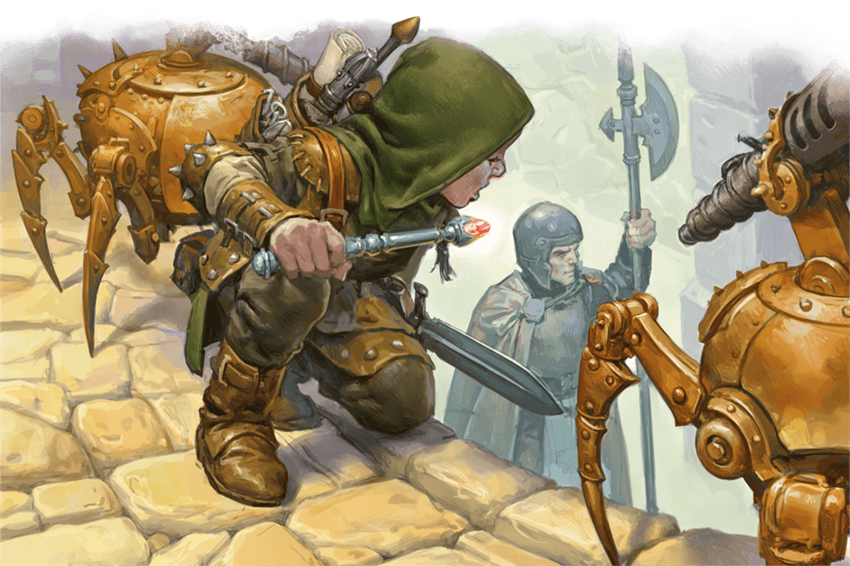
For Players: Basic Teamwork
You can’t do everything yourself. Fortunately, you have a party of other adventurers on your side, willing to help you handle any threat that comes your way. Each D&D character has a wide variety of abilities that only they can do, or that they can do better than anyone. Rogues are stealthy and gain extra damage when they have advantage in combat. Fighters have incredible staying power and consistent damage output, and tend to be strong enough to grapple even powerful monsters and force them to stay in place. Clerics can heal and improve their allies’ innate abilities. Wizards can deal explosive area-of-effect damage, and grant their allies magical abilities like water breathing and flight. And that only scratches the surface of the depth of tactical powers that the twelve classes of D&D can have, to say nothing of unique combinations of feats and racial traits.
Tactics are more than your character’s “build,” but good tactics do start with knowing how to use your class features. Look over your character sheet and think about what your class features can do. What are your options on any given turn? What are some features that aren’t always useful, but could be incredibly powerful in a specific situation—like a cleric using their Channel Divinity to Turn Undead, which only works against certain types of creatures.
Now that you know what you can do on your own, talk with your fellow players and learn what their characters can do. How can your abilities work well together? For instance, a cleric that casts guiding bolt can give the next character to attack the spell’s target advantage. That’s useful for anyone, but it’s especially powerful if a rogue is the next attacker, since the rogue gains Sneak Attack whenever they have advantage!
Rules Tip: Readied Actions
If you want to be especially tactical, consider making use of readied actions. In the guiding bolt example above, only the next attack against the target has advantage. If the cleric goes right before the rogue, that’s an easy decision. But what if the initiative order looks like this?
- Cleric
- Monster
- Druid
- Fighter
- Rogue
There aren’t any other minions around for the fighter and druid to take care of, so it only makes sense to attack the monster and “waste” the rogue’s chance at Sneak Attack. Or, you could have the druid cast a spell (that doesn’t require an attack roll) and have the fighter take the Ready action. To do this, you choose two things: a trigger, and an action. You can only ready actions, not bonus actions. You can ready movement, but not movement and an action. In this case, the fighter would want to move up to the monster on their turn, then take the Ready action, specifying that they will take the Attack action against the monster after the rogue attacks it.
Then, when the trigger occurs (in this case, the rogue attacking the monster with advantage from the cleric’s guiding bolt) the fighter can use their reaction to take the attack action. This is an extra bit of tactical skill that will help you and your allies become an unstoppable team in combat.
Once you’ve identified a few synergies that you and your allies can use together in combat, you’re off to the races! This doesn’t have to be anything fancy; even something as simple as knowing that your fighter’s Strength score of 16 will allow them to long jump over your wizard’s 10-foot-square of grease without trouble is a useful tactic to keep in mind!

For Dungeon Masters: Tactics, Storytelling, and the Mental Load
Next week’s installment of New Player’s Guide will break down how to create top-notch tactical encounters. I wanted to include it in this article, but it’s far too broad a topic to cover in just one section of an article—it deserves its own.
Instead, let’s talk about a somewhat controversial subject: storytelling and tactics. It’s a common belief that playing D&D with maps and minis strips away the roleplaying element of D&D, turning it into a hack ‘n slash board game. Anyone who’s watched Critical Role knows that this isn’t true. Nevertheless, there is an element of truth to this otherwise spurious claim, and it lies in the DM’s mental load.
A DM isn’t a computer, they’re only human. Like a computer, however, a DM only has a limited amount of memory and processing power. Trying to do too many tasks at once, like juggling three different types of monsters, flipping through the Player’s Handbook for spells, making smart tactical decisions, and still roleplaying as the monsters, causes the poor overloaded DM to crash. Well, usually the DM doesn’t crash, but one of the umpteen processes they’re trying to run crashes and gets sidelined for the duration of combat.
The trick is, usually that’s roleplaying. And it’s not just that the DM stops putting on a deep, gravelly voice for their hobgoblin general, it’s that the enemies stop acting like creatures with specific wants and motivations. Some DM’s default to making their monsters all just start act like kill-machines, doing what’s tactically optimal rather than what the monster itself would do. Most monsters don’t act like tactical geniuses, especially creatures with low Intelligence and Wisdom, like most beasts, undead, oozes, and monstrosities. They’re creatures of instinct, quick to anger, easy to scare, and even easier to dupe.
Other DMs flip the other direction, and have all of their monsters start acting like instinct-driven beasts, trying to deal damage at any cost without any thought to clever tactics—even for intelligent creatures. We’ll talk next week about the three pillars of tactical combat, but a lot of DMs throw those pillars out the window when they get overloaded, so their combats end up being interesting character moments but tactically dull; essentially, it’s just a Theater of the Mind combat that takes way too long to set up because of all the maps and minis.
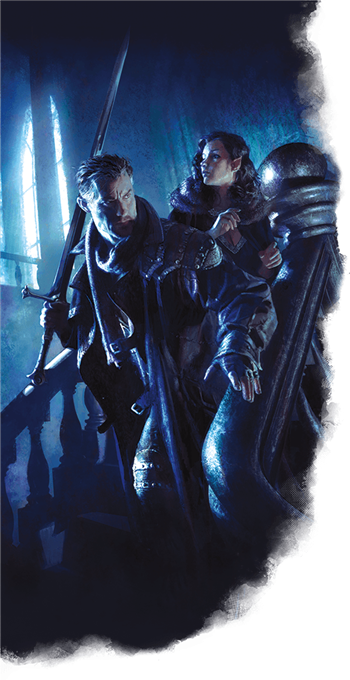 This is where the false dichotomy of roleplaying versus tactical combat comes in; doing both is a lot of work for the DM. And if you’re not prepared for it, you’ll end up dumping some of the mental load in order to keep your brain from crashing. Some DMs, like Matthew Mercer, have done this for ages. They’ve optimized their mental CPU to handle all the different tasks they need to do. Some people’s brains aren’t wired that way, yet or ever. That’s okay, because there are ways around keeping all of those vital bits in your head.
This is where the false dichotomy of roleplaying versus tactical combat comes in; doing both is a lot of work for the DM. And if you’re not prepared for it, you’ll end up dumping some of the mental load in order to keep your brain from crashing. Some DMs, like Matthew Mercer, have done this for ages. They’ve optimized their mental CPU to handle all the different tasks they need to do. Some people’s brains aren’t wired that way, yet or ever. That’s okay, because there are ways around keeping all of those vital bits in your head.
One way—and I suspect this is how expert DMs like Mercer do it—is by instinctually knowing which tasks can be safely “put to sleep” without any loss of performance. Do I need to care about hit points? Maybe I’ll just say the monster dies after four strong hits. Do I need to care about that lich’s 1st- through 5th-spell slots? Nah, it’ll die before it uses ‘em all anyway. Take shortcuts and simplify your task.
The other way is to offload tasks onto your players. Do you really need to be the person to call out whose turn it is? Maybe ask one of your players to track initiative instead of you. Sure, that means you tell them when the monsters are going to act, but that’s not the worst thing in the world. If you want to get really dangerous, ask your players to track the monsters’ hit points—or at least, how much damage each monster has taken. The characters should have a clear idea of how physically wounded all the monsters they can see are, so is that really so strange?
Little things like this take an immense bookkeeping burden off of the DM, and it’s worth considering if you’ve started a campaign with tactical combat, but feel your in-battle roleplaying skills slipping. Since this is such a big change for the players, you might want to talk about it with them in a Session Zero beforehand. After all, some players have their hands full with just their own character already—most cleric, druid, and wizard players do, with all those spell slots to keep track of. And some players might just not be interested in doing the DM’s busywork. That’s totally valid. But most players probably don’t mind either way, and would be happy to help ease your burden by handling initiative or counting how much damage monster has taken.
If you’re interested in creating tactically interesting and incredibly fun combat encounters, check out next week’s installment of New Player’s Guide. We’re talking about how to build tactical encounters like a pro.
Create A Brand-New Adventurer Acquire New Powers and Adventures Browse All Your D&D Content
 James Haeck is the lead writer for D&D Beyond, the co-author of Waterdeep: Dragon Heist, Baldur's Gate: Descent into Avernus, and the Critical Role Explorer's Guide to Wildemount, a member of the Guild Adepts, and a freelance writer for Wizards of the Coast, the D&D Adventurers League, and other RPG companies. He lives in Seattle, Washington with his fiancée Hannah and their animal companions Mei and Marzipan. You can find him wasting time on Twitter at @jamesjhaeck.
James Haeck is the lead writer for D&D Beyond, the co-author of Waterdeep: Dragon Heist, Baldur's Gate: Descent into Avernus, and the Critical Role Explorer's Guide to Wildemount, a member of the Guild Adepts, and a freelance writer for Wizards of the Coast, the D&D Adventurers League, and other RPG companies. He lives in Seattle, Washington with his fiancée Hannah and their animal companions Mei and Marzipan. You can find him wasting time on Twitter at @jamesjhaeck.

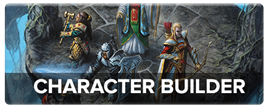
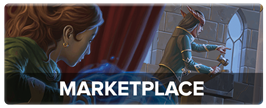
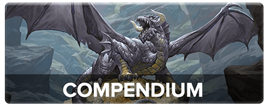
-
View User Profile
-
Send Message
Posted May 1, 2020First Comment!
There is a guiding bolt, and it is not linked. Should it be linked?
It is in where it says "in this case, the rogue attacking the monster with advantage from the cleric’s guiding bolt"
-
View User Profile
-
Send Message
Posted May 1, 2020Very cool.
-
View User Profile
-
Send Message
Posted May 1, 2020I find Theatre of the Mind challenging as I worry about trivializing movement speeds, LOS and cover rules, so I tend to use minis and maps to alleviate that burden. Recently, I started printing out dungeon maps in full grid scale (covered in post-its) and I think it helps the players understand where there are and where they've been more (even in this era of Discord sessions).
Also, I adore minis so I am looking forward to the next installment!
Thanks for these articles James! I've learned alot these past couple years reading your encounters and posts.
-
View User Profile
-
Send Message
Posted May 2, 2020Great post Mr. James. I've been playing for decades and thorough enjoy reading anything that could improve my play and DM'ing. Looking forward to reading the next one!
-
View User Profile
-
Send Message
Posted May 2, 2020This is definitely one of the most eye opening articles I’ve read on dndbeyond. Thanks for putting to words things that I didn’t even realize I was doing as a DM. Looking forward to next week!
-
View User Profile
-
Send Message
Posted May 2, 2020Only quibble I have is that I use a 1 1/4" grid. Reason being, the terrain I have for dungeons and caverns and such have 1/4" walls; with the larger grid, a 25mm base still fits next to a wall.
-
View User Profile
-
Send Message
Posted May 2, 2020”If anyone is worried that playing in a way that emphasizes game mechanics and tactics, don’t worry. The cast of Critical Role play this way, and Matthew Mercer makes combats that are able to be tactical and story-driven all at once. You can have the best of both worlds!“
yes but he is also an expert dm that already has a worldbook. Some of us dms aren’t as experienced or as good storytellers as Mathew Mercer.
-
View User Profile
-
Send Message
Posted May 2, 2020I found this part a bit weird:
First of all, you definitely can use the Ready action to prepare movement:
Also... If the fighter is moving up to the enemy, then the Rogue will be able to use Sneak Attack regardless of advantage because there is an enemy of the target (the fighter) within 5 feet of the target. If the fighter's going to move up to the enemy on their turn, then the only reason to Ready an attack would be if they also wanted the rogue to benefit from the advantage (instead of using it up themselves) - they don't need it to use Sneak Attack.
Also:
The word "Attack" should be capitalized when referring to the Attack action.
Speaking of which, you can use the tooltip syntax to automatically format "Ready" at the start of the sidebar and "Attack" in the bolded portion above as tooltips/links to the relevant rules section, using the syntax:
Also, the first part of this sentence reads a bit strangely:
I feel like either an extra phrase got added here, or some connecting words got removed...
Finally:
I assume this should be "care about", not just "care".
In general, some good advice - especially about the usefulness of delegating some of your tasks as DM to your players!
-
View User Profile
-
Send Message
Posted May 2, 2020They usually avoid repeatedly linking the same thing more than once in an article, so since guiding bolt is already linked a few lines earlier, they probably didn't feel the need to repeat it.
-
View User Profile
-
Send Message
Posted May 2, 2020Hey, there should be a way to subscribe to an article series. I'd love to see the next in this series, but having to come back in a week and search for a tag erects a barrier. Feature request..... :-)
-
View User Profile
-
Send Message
Posted May 2, 2020Great article! I look forward to next week's article! :)
-
View User Profile
-
Send Message
Posted May 2, 2020Am very interested in following these articles. When I was young we were always trying to mix the tactics of the game "Melee" with the character building and world of D&D.
(See: "Melee by Steve Jackson" for history)
-
View User Profile
-
Send Message
Posted May 2, 202036
-
View User Profile
-
Send Message
Posted May 3, 2020I started playing the game back in the early 80s, and for the most part, it was always theater of the mind for combat. Sure, we'd have a map, but we rarely use minis and almost never had a battle mat. And with 1E's very abstracted combat rules, it works really well.
However, when I started 5E a few years ago, the group I joined use a gigantic gridded table and minis. It took a little adjustment, but I can't imagine going back to theater of the mind for combat now, especially if there are 3+ PCs and multiple monsters. (It's also my impression that 5E seems to be explicitly constructed for optimal play to be done using minis. I'm sure this was done partially to sell stuff [i.e., minis] but it also helps eliminate a lot of potential arguments and disagreements about what happens where in the middle of combat.
-
View User Profile
-
Send Message
Posted May 3, 2020Well said.
-
View User Profile
-
Send Message
Posted May 3, 2020I'd love to have more tactics in my encounters, but whenever I do this stuff I focus on roleplaying too much and don't really focus on tactics. This usually means that my encounters are far too easy. Any help?
-
View User Profile
-
Send Message
Posted May 4, 2020Meld these two things together. If you're roleplaying the monsters, that should include tactics. The monsters are cunning or intelligent, they're not going to just blindly attack or not use special abilities. Let that group of gnolls soften the party up with their longbows before closing to melee. Let the manticore try and grapple a character and fly off with it. Most of your monsters are trying to kill (and eat or loot) the characters, so roleplay how they'd do that using the most of their abilities.
-
View User Profile
-
Send Message
Posted May 4, 2020Thanks! Those are some really good ideas (may steal them hehe).
-
View User Profile
-
Send Message
Posted May 4, 2020This is done by using the "Dash" Action which is still a (Standard) action. The implication in the article is that you can't use your movement action or your bonus action with the Ready action.
-
View User Profile
-
Send Message
Posted May 4, 2020Great post, especially the reminder to chain party events, like having the fighter "ready" so the rogue can benefit from the advantage. I tend to think about ready based on an enemy trigger, so that was a great tip. However do you think this causes any meta-gaming issues, if others are trying to coach or suggest strategy during combat?